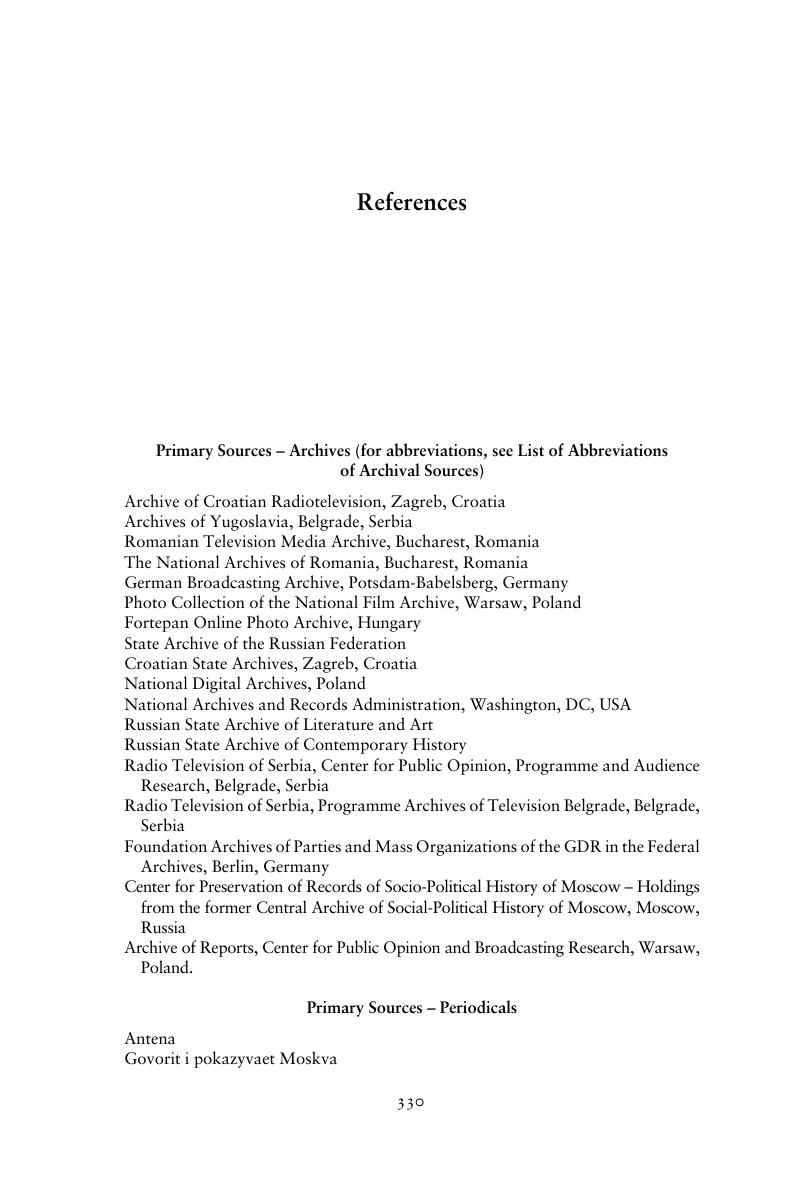Book contents
- From Media Systems to Media Cultures
- Communication, Society and Politics
- From Media Systems to Media Cultures
- Copyright page
- Contents
- Figures
- Tables
- Acknowledgements
- Abbreviations of Archival Sources
- 1 Introduction
- Part I Concepts and Contexts
- Part II The Spaces of State Socialist Television
- Part III The Times of State Socialist Television
- Methodological Appendix
- References
- Index
- Other Books in the Series (continued from page ii)
- References
References
Published online by Cambridge University Press: 23 August 2018
- From Media Systems to Media Cultures
- Communication, Society and Politics
- From Media Systems to Media Cultures
- Copyright page
- Contents
- Figures
- Tables
- Acknowledgements
- Abbreviations of Archival Sources
- 1 Introduction
- Part I Concepts and Contexts
- Part II The Spaces of State Socialist Television
- Part III The Times of State Socialist Television
- Methodological Appendix
- References
- Index
- Other Books in the Series (continued from page ii)
- References
Summary

- Type
- Chapter
- Information
- From Media Systems to Media CulturesUnderstanding Socialist Television, pp. 330 - 358Publisher: Cambridge University PressPrint publication year: 2018

